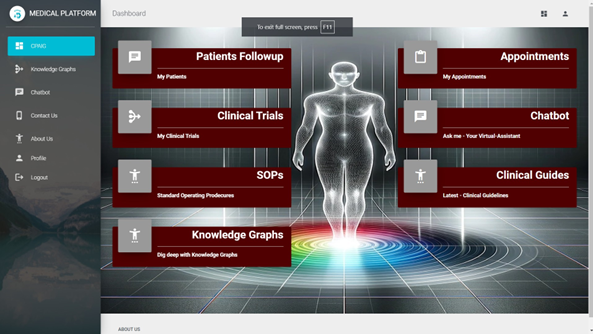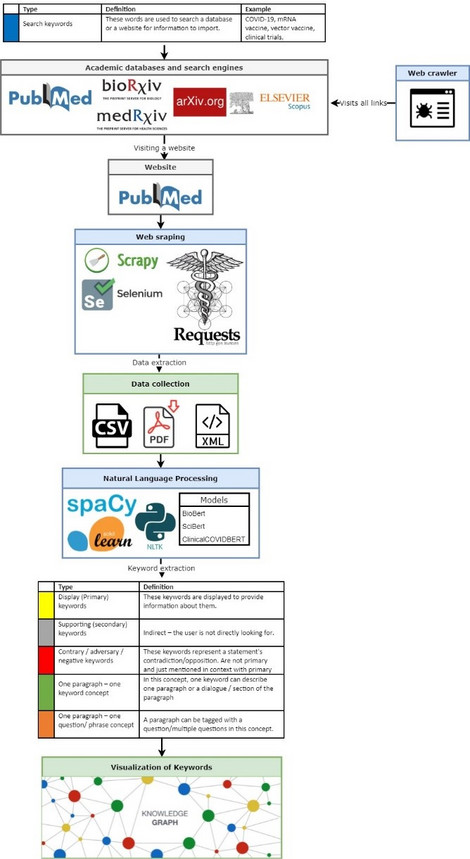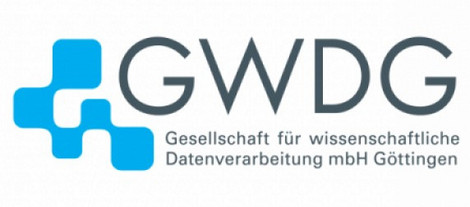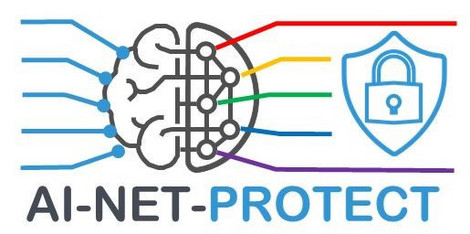AG Asif: Clinical Proteomics & Artificial Intelligence Group (CPAIG)
In a world where the average lifespan is rising and populations are expanding, the demand for healthcare services has reached unprecedented levels. Countries worldwide are grappling with a chronic shortage of healthcare professionals, a challenge further exacerbated by the relentless economic pressures. Amidst these growing concerns, Artificial Intelligence (AI), driven by advances in Machine Learning (ML), is emerging as a powerful tool to enhance healthcare delivery. By augmenting the capabilities of healthcare providers, AI promises to enable more personalized and precise medical care for patients. Yet, despite its potential, AI’s impact in clinical practice remains largely untapped, with its benefits confined to specific, controlled settings.
At our Clinical AI Research Group, in collaboration with the Future Networks Team, eScience Group at the GWDG, we are at the forefront of developing AI-driven solutions designed for clinical environments. Our mission is to unlock the full potential of AI in healthcare, driving the evolution of personalized and precision medicine. Below, you will find an overview of our ongoing projects dedicated to achieving this vision.
AI-MEDICS and Medical Datasets
AI-MEDICS is an ongoing project aiming for an advanced clinical decision support system, offering tools and insights that enable more accurate and efficient diagnoses. For physicians, AI-MEDICS provides a powerful set of tools to enhance clinical decision-making, streamline patient management, and support adherence to clinical guidelines and scientific literature. With AI-driven insights, doctors can access real-time data, predictive analytics, and personalized treatment recommendations tailored to each patient's unique needs, improving overall patient outcomes. The patients get access to valuable educational resources and personalized advice, empowering them to make informed decisions about their health and addressing their questions and concerns with clarity and confidence. Through this innovative platform, we aim to elevate the quality of care and improve health outcomes for all.
At the heart of AI-MEDICS is a finely-tuned LLAMA-2 chat model with 13 billion parameters, specifically optimized for medical diagnostics. This model has been enhanced using a range of open-source datasets focused on natural language processing for medical queries and responses. These datasets include Anki flashcards, medical wikis, and StackExchange Q&A on health-related topics, as well as questions from the United States Medical Licensing Examination (USMLE) and other medical benchmarks. By transforming these datasets into instruction-tuning formats, the LLAMA-2 model is empowered to deliver precise and contextually relevant responses within the medical domain. Alongside the open source datasets, custom generated data-set from diagnostic medical books has also been prepared and used for this project.

AI Web Crawling, Data-Mining and Knowledge graphs
AI-driven web crawling, data mining, and knowledge graphs are revolutionizing the way we gather, process, and understand vast amounts of data. These technologies empower us to extract valuable insights from diverse sources, organize them meaningfully, and present them in a way that drives informed decision-making, particularly in the healthcare sector.
KnowVID-19: Artificial Intelligence Based Predictive Covid-19 Connecter
One of our key projects, the Artificial Intelligence-Based Predictive COVID-19 Connector, exemplifies this approach. This advanced, self-learning tool continuously crawls the web for the latest information on SARS-CoV-2 and COVID-19, gathering scientific, social, and commercial data from public sources. The system then intelligently sorts and organizes this information, presenting it in a multidimensional format that highlights its relevance to the pandemic. This allows researchers, policymakers, and healthcare professionals to access up-to-date insights that are crucial for managing and understanding the evolving situation.
Chat-Bot / Covid-Bot: Revolutionizing Conversational AI in Healthcare
Covid-Bot is a next-generation conversational AI designed specifically for the healthcare sector. To achieve highly relevant and precise responses, we have integrated advanced large language models. By leveraging state-of-the-art text generation models like Llama 2 and large corpus of medical information datasets, we have significantly enhanced the bot's performance. These powerful integrations have elevated the bot's conversational abilities, enabling it to generate more coherent, context-aware, and natural responses that provide an engaging user experience.
As we move forward, our focus is on further refining Covid-Bot’s ability to deliver nuanced, contextually appropriate responses that maximize engagement and satisfaction for both patients and healthcare professionals. Through continuous testing and optimization, we are dedicated to establishing Chat-Bot as a trusted and invaluable resource, providing reliable, accessible, and comprehensive medical information across a broad spectrum of healthcare topics.

Clinical Proteomics
Functional endothelium is responsible for maintaining a balance between vasodilation and vasoconstriction, between inhibition and stimulation of cell proliferation and migration, and between thrombogenesis and fibrinolysis. The functional impairment of endothelium breaks this balance causing damage to the arterial wall. The CPAIG investigates the underlying mechanism of endothelial dysfunction (ED) and its contribution to the development of cardiovascular diseases. The CPAIG has long-standing expertise in the field of clinical proteomics and mass spectrometry for the quantitative and qualitative differential protein profiling, protein-protein interactions, DNA-Protein-interactions, drug protein targets and characterization of post-translational modifications. We utilize omics approaches to broaden our understanding of the mechanism behind the disease progression and investigating the new therapeutic options.
Inflammation, Tight-Junctions and Endothelial Dysfunction
Bromodomain Protein 4 (BRD4) binds multiple promoters as well as intergenic regions, particularly enhancer sequences. The BRD4 inhibition could block NF-kB-mediated super-enhancer formation to help treat inflammation and atherosclerosis. We seek to understand the role of BRD4 isoforms in endothelial dysfunction and how BRD4 inhibition could rescue the endothelium integrity during inflammation. Furthermore, using an endothelial cells (HUVECs) model, we investigate the influence of inflammation on endothelial monolayer tight junctions and the role played by the BRD4 inhibition in preserving its integrity.
Laminar- / Oscillating-Shear Stress and Endothelial Dysfunction
The level of fluid shear stress (FSS) acting on endothelial cells is higher in arterial vessels compared to venous vessels. The nature of FSS experienced by endothelial cells is a function of blood flow patterns generated by the cardiac cycle. We subject the human umbilical vein endothelial cells (HUVEC) to shear forces, as prevalent in vessels, using a special apparatus for both oscillatory and laminar shear stress to mimic a physiological situation. The cellular models are used to broaden our understanding of the influence of age and inflammation in the progression of atherosclerosis.
Kontakt

Kontaktinformationen
- Telefon: +49 551 3968450
- E-Mail-Adresse: asif(at)med.uni-goettingen.de

Kontaktinformationen
- Telefon: +49 176 20583783
- E-Mail-Adresse: muzzamil.aziz(at)gwdg.de
Future Networks, eScience Group

Kontaktinformationen
- Telefon: +49 551 2012115
- E-Mail-Adresse: amirreza.fazely.hamedani(at)gwdg.de
Future Networks, eScience Group
Weblinks
eScience, GWDG: https://www.gwdg.de/about-us/organization/departments/escience

Collaborative project: https://www.celticnext.eu/project-ai-net-protect/

